20 of the most celebrated plot twists and reveals in film
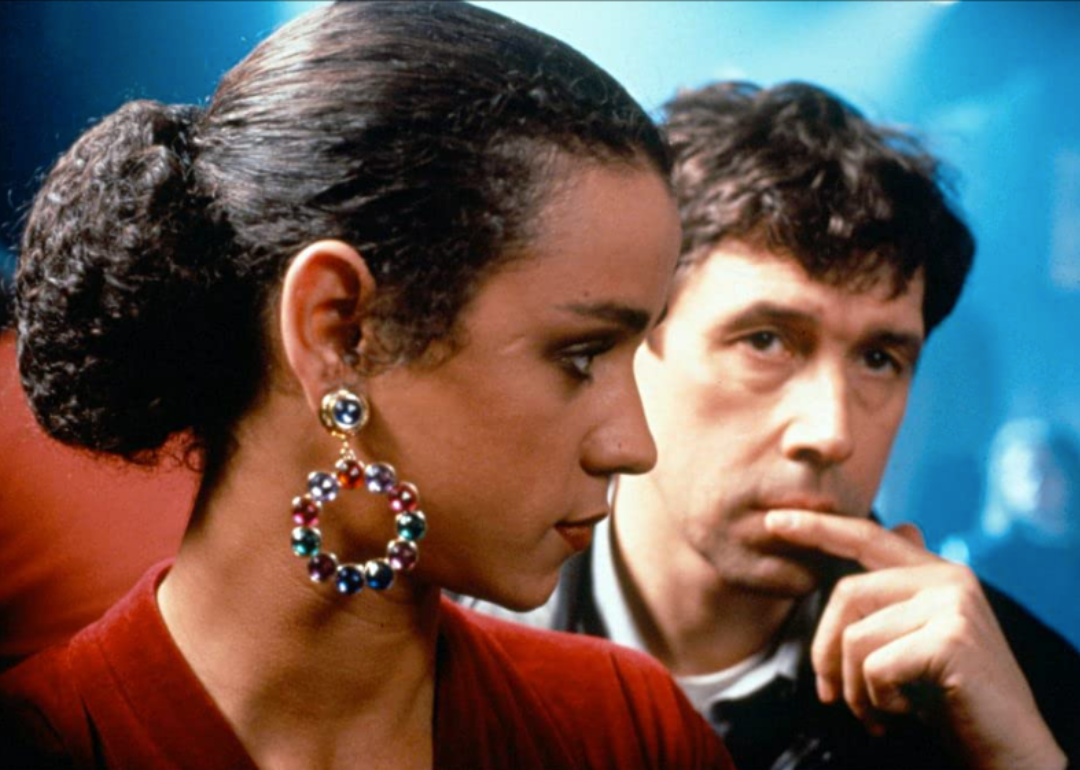
Palace Pictures
20 of the most celebrated plot twists and reveals in film
Jaye Davidson and Stephen Rea in “The Crying Game.”
Nothing keeps an audience on the edge of their seats more than the plot twist—and nothing throws them back like an unexpected reveal.
A plot twist is a narrative tool used to subvert audience expectations of where a story is going, usually revealed in the third act of a book or film while being carefully set up from the very beginning. Writers and directors use this tool to make audiences rethink everything they presumed to understand about the fictional universe they’ve created and keep their eyes glued to the screen. Plot twists also lend themselves to rewatching the same film or rereading the same book again with the twist in mind, both to revel in the surprise once more and to parse any details that might betray themselves as tells in the story’s earlier moments.
Masterclass outlines several plot twists, ranging from discovering a story’s narrator is unreliable to realizing that a supposedly important item or piece of information is a distraction from what’s happening.
With this in mind, Stacker has compiled a list of 20 of the most iconic plot twists and reveals in American film history. To qualify, the film had at least a 7.0 on IMDb with at least 50,000 user votes. The oldest film on this list was made in 1939, and the newest originated in 2017, making it clear that the plot twist has been a staple of American cinema for almost as long as cinema has had sound (the first talkie being released in 1927)!
Check out this list of twists and reveals to see if your favorite cinematic surprise made the cut. (And be aware: spoilers ahead!)
You may also like: 100 best fantasy movies of all time
![]()

Metro-Goldwyn-Mayer (MGM)
The Wizard of Oz (1939)
Judy Garland awakens for her dream in “The Wizard of Oz.”
– Directors: Victor Fleming, George Cukor, Mervyn LeRoy, Norman Taurog, Richard Thorpe, King Vidor
– IMDb user rating: 8.1
– Metascore: 92
– Runtime: 102 minutes
The ending of “The Wizard of Oz” falls into the same category as many stereotypical short stories written in high school English classes (the “but it was all a dream” ending, for example). Dorothy Gale (Judy Garland) is an average farm girl who gets swept away to the magical land of Oz via a tornado.
There, she meets several classic characters like the Tin Man, the Cowardly Lion, and the Scarecrow and must defeat the Wicked Witch of the West to leave Oz. But when she clicks her heels three times and wishes for home, Dorothy awakens in her bed, revealing that the entire film was her unconscious mind playing out a fantasy—even her fantastical friends were really just farmhands in the end.

RKO Radio Pictures
Citizen Kane (1941)
The sled, Rosebud, from “Citizen Kane.”
– Director: Orson Welles
– IMDb user rating: 8.3
– Metascore: 100
– Runtime: 119 minutes
It’s no secret “Citizen Kane” is widely considered one of the best films ever made. For such a wonderfully complex film, though, its central question is quite simple: what is “Rosebud”? “Rosebud” is literally the last word central character Charles Kane (Orson Welles) mutters before his death. The significance of “Rosebud” is where things get complicated, as journalist Jerry Thompson (William Alland) is tasked with discovering its meaning and, as such, interviews several figures from Kane’s life to no avail.
At the end of the film, in a seemingly random twist, “Rosebud” is revealed as the name for Kane’s sled from childhood. Interpretations of the sled’s significance vary, but the popular reading is that childhood and memories of childhood are the only places where true happiness resides.

Edward Small Productions
Witness for the Prosecution (1957)
Marlene Dietrich and Charles Laughton in “Witness for the Prosecution.”
– Director: Billy Wilder
– IMDb user rating: 8.4
– Metascore: 76
– Runtime: 116 minutes
Agatha Christie’s murder mysteries have long been a source of inspiration for great films, including Rian Johnson’s “Knives Out” and “Glass Onion: A Knives Out Mystery,” but this specific Christie adaptation contains a shocking twist. “Witness for the Prosecution” follows British lawyer Sir Wilfrid (Charles Laughton), who attempts to prove his client Leonard Vole (Tyrone Power) is innocent of killing a widow who made Vole her sole beneficiary upon her death.
Thanks to spousal privilege, Vole’s wife, Christine (Marlene Dietrich), cannot testify against him and instead serves as the titular witness. However, the story she told on the stand is proven false, thanks to evidence given by a mysterious female, which eventually acquits Vole and gets Christine tried for perjury.
Yet, in a classic Christie twist, it’s revealed that Christine and the mysterious woman who provided the acquitting evidence are one and the same, and her entire involvement in the trial of Vole was a ruse to free her guilty husband. When the husband then reveals he intends to leave her for another woman, Christine puts an end to him—right there in the courtroom.

Shamely Productions
Psycho (1960)
Anthony Perkins in “Psycho.”
– Director: Alfred Hitchcock
– IMDb user rating: 8.5
– Metascore: 97
– Runtime: 109 minutes
Alfred Hitchcock’s classic “Psycho” could be argued to have two separate plot twists. The first comes 50 minutes into the film when Marion Crane (Janet Leigh), the assumed protagonist, gets brutally murdered with over an hour left in the plot. To this day, this is a taboo move for filmmakers to make, and its echoes can be seen in films as recent as 2022’s “Barbarian.”
The second plot twist in “Psycho” is the dramatic reveal that Norman Bates (Anthony Perkins), the awkward innkeeper of the Bates Motel, has actually been the one violently murdering people while dressed as his deceased mother, who has become a fractured facet of his identity. Everything about this film’s narrative structure and dramatic reveal were utterly unheard of when it was released in 1960, cementing its place as one of the strangest and most memorable movies ever made.

John Ford Productions
The Man Who Shot Liberty Valance (1962)
James Stewart and John Wayne in “The Man Who Shot Liberty Valance.”
– Director: John Ford
– IMDb user rating: 8.1
– Metascore: 94
– Runtime: 123 minutes
The narrative concept of the plot twist and the Western genre of film are not two things that people usually associate together, but the John Ford classic “The Man Who Shot Liberty Valance” is the perfect merging of both. The film centers around Sen. Ransom Stoddard (James Stewart), who details his past friendship with rancher Tom Doniphon (John Wayne) 25 years earlier, which, at the time, culminated in a now-infamous standoff between Ransom and the cowboy criminal Liberty Valance (Lee Marvin).
The younger Ransom, despite his inadequacy with guns, somehow managed to shoot and kill Valance—except it was really Doniphon who secretly shot and killed Valance to save Ransom’s life.
You may also like: 100 greatest movie songs from 100 years of film
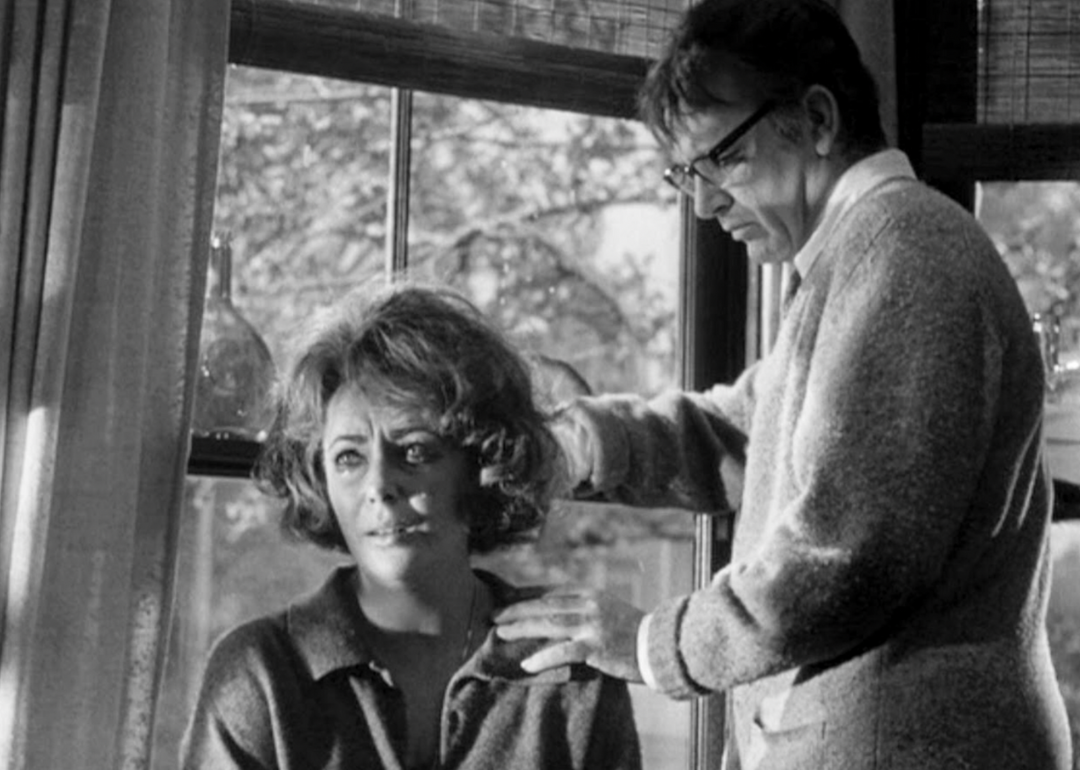
Warner Bros.
Who’s Afraid of Virginia Woolf? (1966)
Richard Burton and Elizabeth Taylor in “Who’s Afraid of Virginia Woolf?”
– Director: Mike Nichols
– IMDb user rating: 8.0
– Metascore: 75
– Runtime: 131 minutes
Based on the equally famous play, “Who’s Afraid of Virginia Woolf?” details one night in the lives of George (Richard Burton) and Martha (Elizabeth Taylor), a married couple frequently and violently at odds with each other. They are joined by a second couple, Nick (George Segal) and Honey (Sandy Dennis), and the couples discuss their equally volatile marriages and career aspirations. Martha lovingly talks about their 16-year-old son, much to George’s displeasure.
Why does George get angry? It’s revealed at the end of the film that the couple doesn’t actually have a son and is infertile, so as a form of coping, they’ve conjured up an imaginary one to fill that void with the promise that they will never talk about him to others.

APJAC Productions
Planet of the Apes (1968)
The Statue of Liberty as seen in “Planet of the Apes.”
– Director: Franklin J. Schaffner
– IMDb user rating: 8.0
– Metascore: 79
– Runtime: 112 minutes
An iconic piece of Cold War-inspired science fiction, “Planet of the Apes” creates a world that seems, at face value, very different from our own. Three astronauts land on an unknown planet, only to be captured by a highly intelligent humanoid ape population who seem to be the dominant life force. The astronauts are treated like vermin or specimens, and two of the three are killed.
The last astronaut, George Taylor (Charlton Heston), lives long enough to discover the rubble of the Statue of Liberty amid the desertlike landscape, realizing this unknown planet has actually been Earth the entire time. The human population had been eradicated by its own nuclear war, and over the thousands of years since that time, apes evolved and filled humankind’s place in a scathing indictment of the Cold War.

Metro-Goldwyn-Mayer (MGM)
Soylent Green (1973)
Charlton Heston in a scene from “Soylent Green.”
– Director: Richard Fleischer
– IMDb user rating: 7.0
– Metascore: 66
– Runtime: 97 minutes
“Soylent Green” is a film that seems more timely than ever, tackling heavy themes of global warming, overpopulation, and food and housing shortages in a Charlton Heston-led dystopian thriller. The film paints a grim portrait of New York City in the far-off year of 2022, where ecological destruction has ravaged the world and led to the lower and middle classes relying on artificial wafers, including the titular Soylent Green, as their only means of sustenance.
When a high-ranking official in the Soylent company is killed, Robert Thorn (Heston) must find out why. The answer is gruesome: The official was silenced before he could reveal to the world that “Soylent Green is people.” That’s right, the food of the working class was none other than repurposed human corpses in one of the most gruesome twists on this list.

The Directors Company
The Conversation (1974)
Gene Hackman in a scene from “The Conversation.”
– Director: Francis Ford Coppola
– IMDb user rating: 7.8
– Metascore: 87
– Runtime: 113 minutes
Francis Ford Coppola made some of the greatest dramatic thrillers of the latter half of the 20th century—”The Godfather,” “Apocalypse Now,” “The Cotton Club”—but no Coppola film pulls the rug out from under its audience more than “The Conversation.” The film follows Harry Caul (Gene Hackman), a professional surveillance expert who wiretaps a conversation that reveals his client is likely planning to murder his wife and her lover.
Struggling with guilt, Harry refuses to hand the tapes over and later witnesses the crime occur, except the next day, he sees the wife still alive and well, and his very own client is dead. In a shocking twist, it’s revealed the conversation Harry recorded actually details the wife and her lover’s plot to kill none other than his own client, making Harry implicit in barring his client from the lifesaving information.

Lucasfilm
Star Wars: Episode V – The Empire Strikes Back (1980)
Mark Hamill and David Prowse in “Star Wars: Episode V – The Empire Strikes Back.”
– Director: Irvin Kershner
– IMDb user rating: 8.7
– Metascore: 82
– Runtime: 124 minutes
Die-hard fans and critics alike laud “The Empire Strikes Back” as the best installment in the Star Wars series; it has been called “the gold standard” of the franchise by IGN for its darker tone, the high-tension romance between Leia and Han Solo, and the deeply entertaining Luke-Yoda training sequences. It also birthed the phrase that became synonymous with doing an impersonation of famed villain Darth Vader: “I am your father.”
While everyone knows this quote now, at the time of the film’s release, this was an utterly shocking plot twist that permanently altered the way audiences viewed the series. This twist hits even harder thanks to the film’s ending, which implies the Empire has won and Han Solo may be no more, a bold choice for a major blockbuster.
You may also like: Mistakes from the 50 best movies of all time

Palace Pictures
The Crying Game (1992)
Jaye Davidson and Stephen Rea in “The Crying Game.”
– Director: Neil Jordan
– IMDb user rating: 7.2
– Metascore: 90
– Runtime: 112 minutes
Set against the backdrop of the Irish Republican Army’s fight against British Rule of Northern Ireland, “The Crying Game” is a morally ambiguous tale of an antihero named Fergus (Stephen Rea) who befriends IRA prisoner Jody (Forest Whitaker) and fails to execute him when demanded. This is the first of the twists in the film, as Jody and Fergus manage to escape the IRA’s camp, and just when the audience thinks everything’s okay—bam!—Jody is run over by a British tank.
Later, Fergus escapes to London, where he meets Dil, Jody’s ex-lover, and the pair become involved romantically. This leads to a plot twist that was surprisingly progressive for 1992, as Dil is revealed to be a trans woman, and Fergus continues to pursue her with this knowledge. From a contemporary perspective, it’s hardly a massive shocking plot twist for someone to be trans, of course, but “The Crying Game” was among the first films to legitimize a trans character with genuinely dramatic and romantic weight.
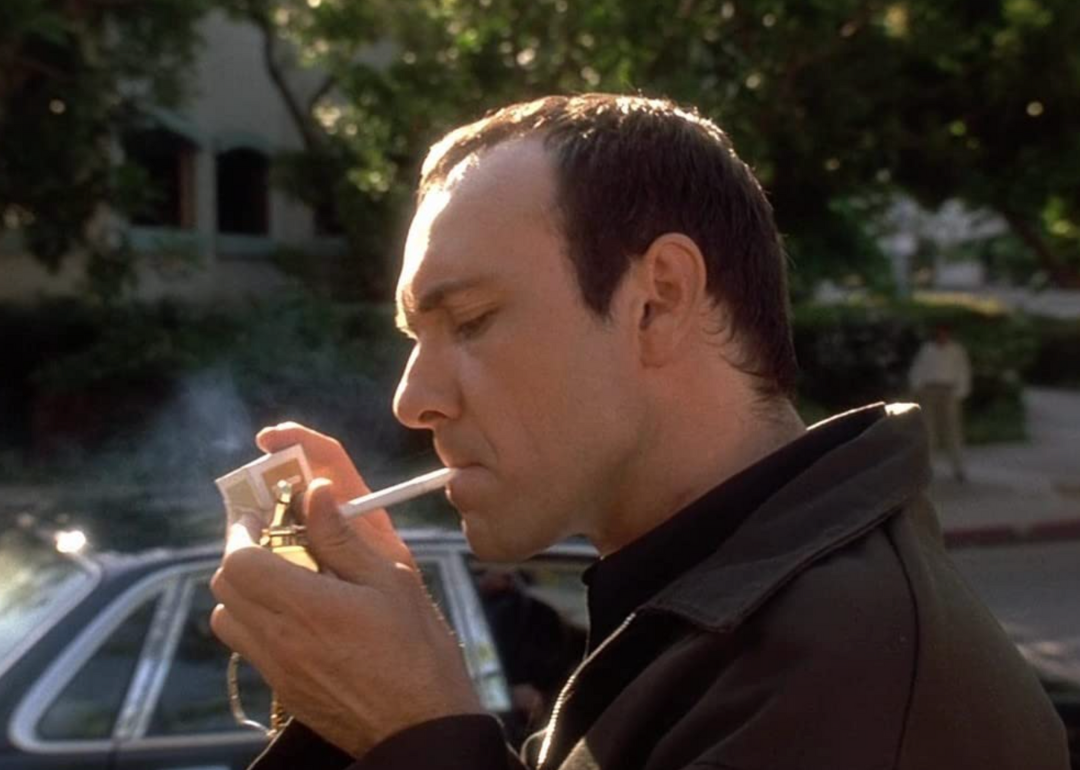
PolyGram Filmed Entertainment
The Usual Suspects (1995)
Kevin Spacey in “The Usual Suspects.”
– Director: Bryan Singer
– IMDb user rating: 8.5
– Metascore: 77
– Runtime: 106 minutes
Keyser Söze is a name that most people have heard, even if they haven’t seen “The Usual Suspects,” from which the character originates. The film details the story of a group of ragtag criminals who team up for a heist and eventually get gunned down on a boat. The story within the film is narrated post-massacre by one of the two surviving criminals, Roger “Verbal” Kint (Kevin Spacey).
While Verbal details the event, he keeps mentioning notorious crime lord Keyser Söze, who seemingly pulled the strings on the group’s efforts. It’s heavily implied that Keyser was undercover within the team, and all signs point to the character Keaton (Gabriel Byrne) as the main suspect. It isn’t until the film ends that it’s cleverly revealed Keyser is none other than Verbal himself, who has gone so far as to fake a limp and cerebral palsy as a disguise and that the entire story he’s narrated has been nothing more than a spontaneous fiction.

Cecchi Gori Pictures
Se7en (1995)
Brad Pitt in “Se7en.”
– Director: David Fincher
– IMDb user rating: 8.6
– Metascore: 65
– Runtime: 127 minutes
“Se7en” is the nihilistic intersection between the horror and true crime genre, following Detectives Mills (Brad Pitt) and Somerset (Morgan Freeman) as they hunt down a serial killer exacting murders based on the seven deadly sins. This film is also the origin of the heavily quoted line “What’s in the box?” which directly ties to the gut-wrenching plot twist within the film.
The two protagonists come face-to-face with the killer, John Doe (Kevin Spacey), with the promise of finding the last two victims (whose deaths are based on the sins of envy and wrath). Instead, Mills receives a cardboard box. So what’s in the box? Well, it is said to contain the severed head of Pitt’s wife, Tracy (Gwyneth Paltrow).
By killing her, Doe himself satisfies the envy killing, causing Pitt to kill Doe himself, satisfying the wrath killing, and officially completing the seven deadly sins.
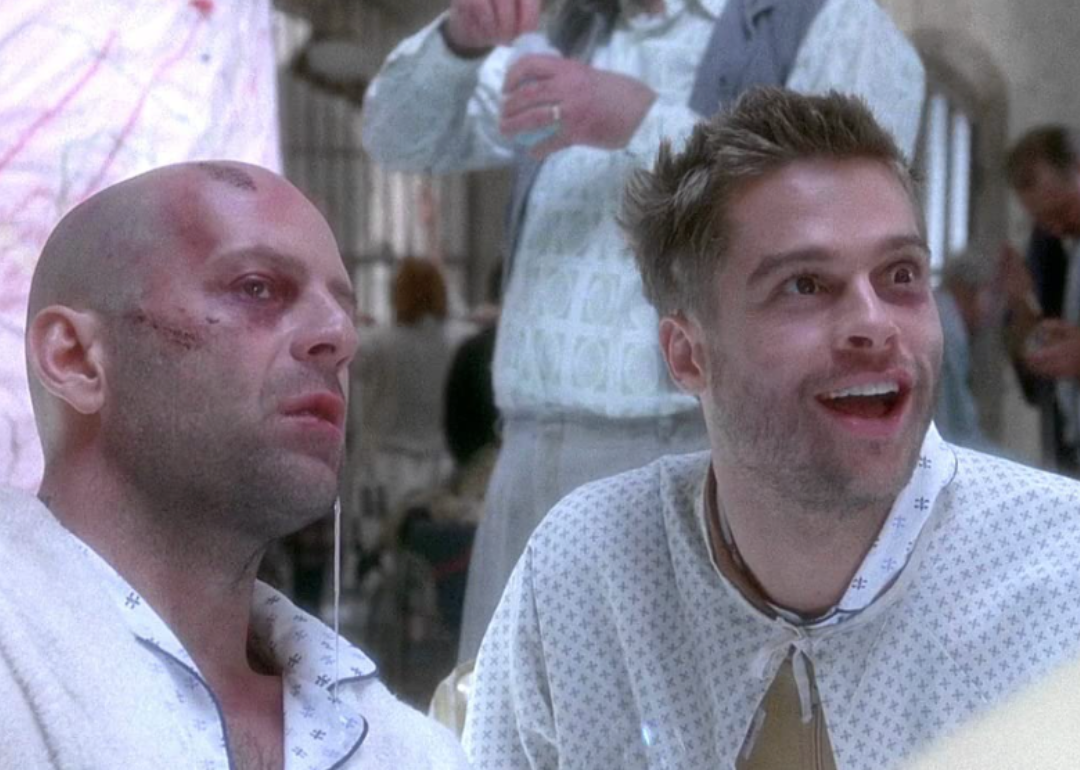
Universal Pictures
12 Monkeys (1995)
Bruce Willis and Brad Pitt in a scene from “12 Monkeys.”
– Director: Terry Gilliam
– IMDb user rating: 8.0
– Metascore: 74
– Runtime: 129 minutes
Attempting to summarize the plot of “12 Monkeys” is an impossible task, but in its simplest form, it’s a science fiction film about a man sent back in time to find samples of a virus that wiped out most of humanity to make a cure back in the future. The protagonist, Cole (Bruce Willis), has a recurring dream—implied to be his own memory—of a child watching a man get gunned down in an airport.
The significance of this dream is not explained for the bulk of the film. In the final act, Cole is attempting to shoot the person he believes responsible for releasing the deadly virus when, in a cruel twist of fate, he himself is gunned down. Thanks to time travel, it’s revealed that Cole is both the child watching the man get gunned down and the man getting gunned down himself.

Hollywood Pictures
The Sixth Sense (1999)
Haley Joel Osment in “The Sixth Sense.”
– Director: M. Night Shyamalan
– IMDb user rating: 8.2
– Metascore: 64
– Runtime: 107 minutes
Part horror film, part family drama, “The Sixth Sense” is a masterclass in constructing a plot twist so iconic that it cemented director M. Night Shyamalan as the master of the twist forever (although he claims plot twists are of little interest to him). What makes this film’s twist so shocking is that it’s revealed to both the protagonist, Malcolm Crowe (Bruce Willis), and the audience simultaneously that Malcolm has been a ghost for almost the entire film.
It’s only thanks to aid from Cole (Haley Joel Osment), a 9-year-old boy with ESP who delivers the classic line “I see dead people,” that Malcolm’s death finally comes to light. Once this reveal occurs, however, it immediately becomes obvious that Shyamalan has been carefully spelling this truth out to the audience since the film’s beginning.
You may also like: Classic movie quotes that have broken into our daily vocabulary

Fox 2000 Pictures
Fight Club (1999)
Brad Pitt and Edward Norton in “Fight Club.”
– Director: David Fincher
– IMDb user rating: 8.8
– Metascore: 66
– Runtime: 139 minutes
“Fight Club” has achieved a level of cult status that most films can only dream of attaining, with the unfortunate side effect of its largest audience base (i.e., “film bros“) fundamentally missing the point. However, theme aside, “Fight Club” also achieves one of the most incredible plot twists in film history surrounding the relationship between its protagonists, the Narrator (Edward Norton) and Tyler Durden (Brad Pitt).
The two men meet and form the titular fight club, but Tyler quickly gets carried away, creating a whole movement called “Project Mayhem” that spirals out of control. When the Narrator desperately tries to stop the Project, it’s revealed that he is actually Tyler; Brad Pitt’s character was just an imaginary representation of his fractured psyche. It’s the kind of plot twist that makes audiences want to watch the film again with this shocking new information in mind.
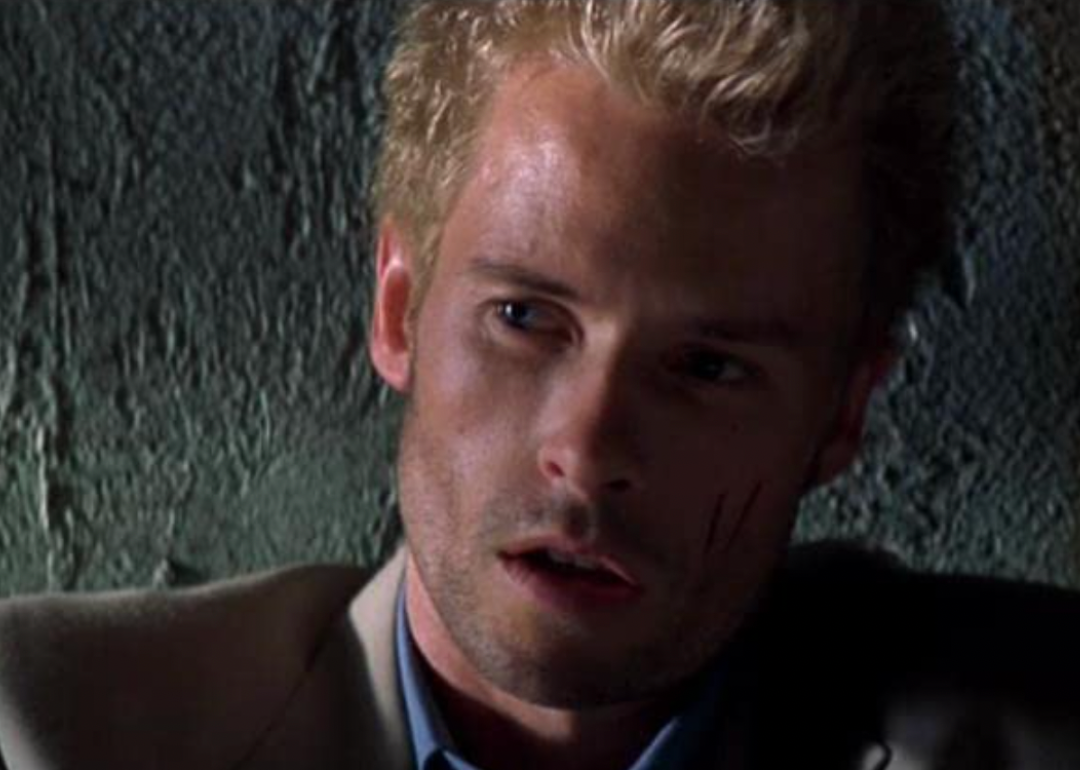
Newmarket Capital Group
Memento (2000)
Guy Pearce in “Memento.”
– Director: Christopher Nolan
– IMDb user rating: 8.4
– Metascore: 80
– Runtime: 113 minutes
It’s hard to achieve a satisfying plot twist in a film that’s literally told backward, with the narrative ending being the first thing the audience sees, but somehow Christopher Nolan successfully pulls it off in “Memento.”
Based on a short story written by his brother Jonathan, the plot follows Leonard Shelby (Guy Pearce), who suffers from anterograde amnesia, meaning his brain cannot form new memories, as he hunts down his wife’s killer. Throughout the film, he casually tells us the story of a man named Sammy who had the same condition and inadvertently killed his wife; however, in a shocking yet inevitable twist, it’s revealed that Leonard and Sammy are one and the same.
The man Leonard is hunting is really himself.

Twisted Pictures
Saw (2004)
Leigh Whannell in “Saw.”
– Director: James Wan
– IMDb user rating: 7.6
– Metascore: 46
– Runtime: 103 minutes
The plot twist in James Wan’s debut feature, “Saw,” can only be described as a long con, in that the plot twist is right in front of the audience’s faces for the entire duration of the film and only pays off in its final 10 minutes. Due to the movie’s minuscule budget, the plot is deceptively simple: Two men wake up trapped in a room full of murderous traps set by the Jigsaw Killer and must try to survive.
The only other person in the room is the corpse of a suicide victim sprawled out on the floor, except the corpse is actually the real Jigsaw Killer, which audiences discover when, after 90 minutes of lying still on the floor, he crawls up onto his knees in one of the horror genre’s greatest twists ever.
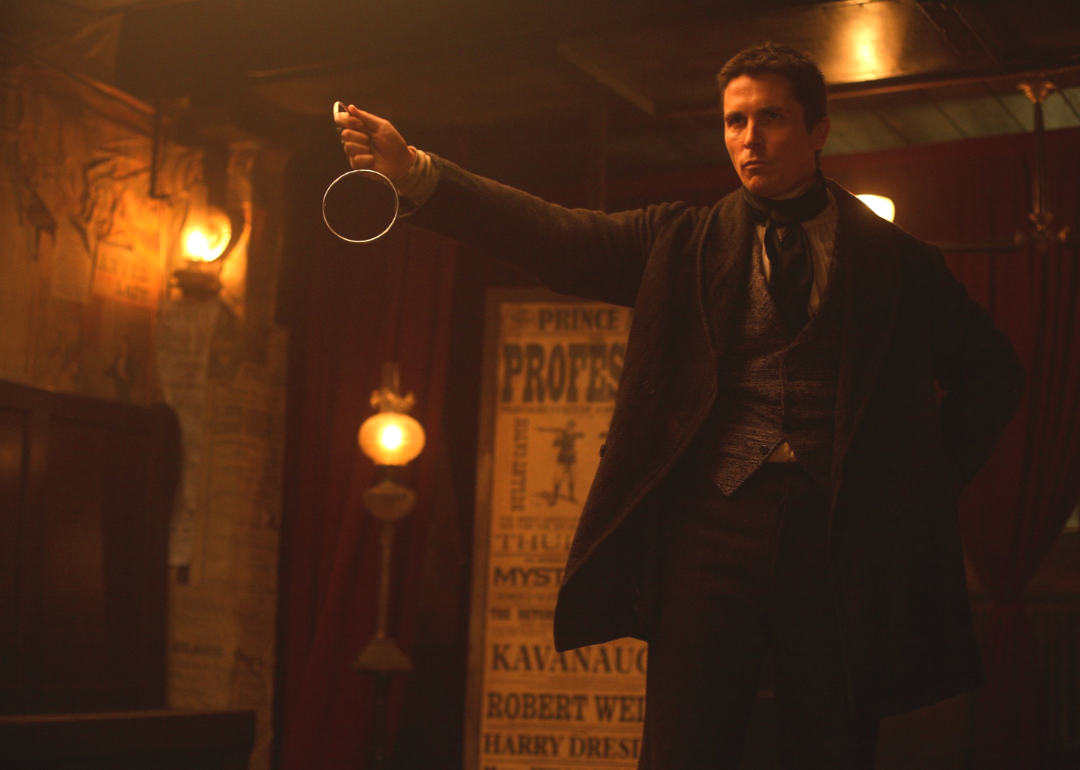
Touchstone Pictures
The Prestige (2006)
Christian Bale in “The Prestige.”
– Director: Christopher Nolan
– IMDb user rating: 8.5
– Metascore: 66
– Runtime: 130 minutes
“The Prestige” is simultaneously one of Christopher Nolan’s strongest films and one of the most underrated in his oeuvre. It follows the escalating conflict between two magicians, Robert Angier (Hugh Jackman) and Alfred Borden (Christian Bale). Alfred has the uncanny ability of transportation, which he executes live in front of audiences every night, making him more successful.
In a shocking twist, it’s revealed that Alfred is actually a pair of identical twins masquerading as one for the sole purpose of executing their transportation trick and befuddling audiences, but this masquerade comes at the cost of one twin’s life and his wife.
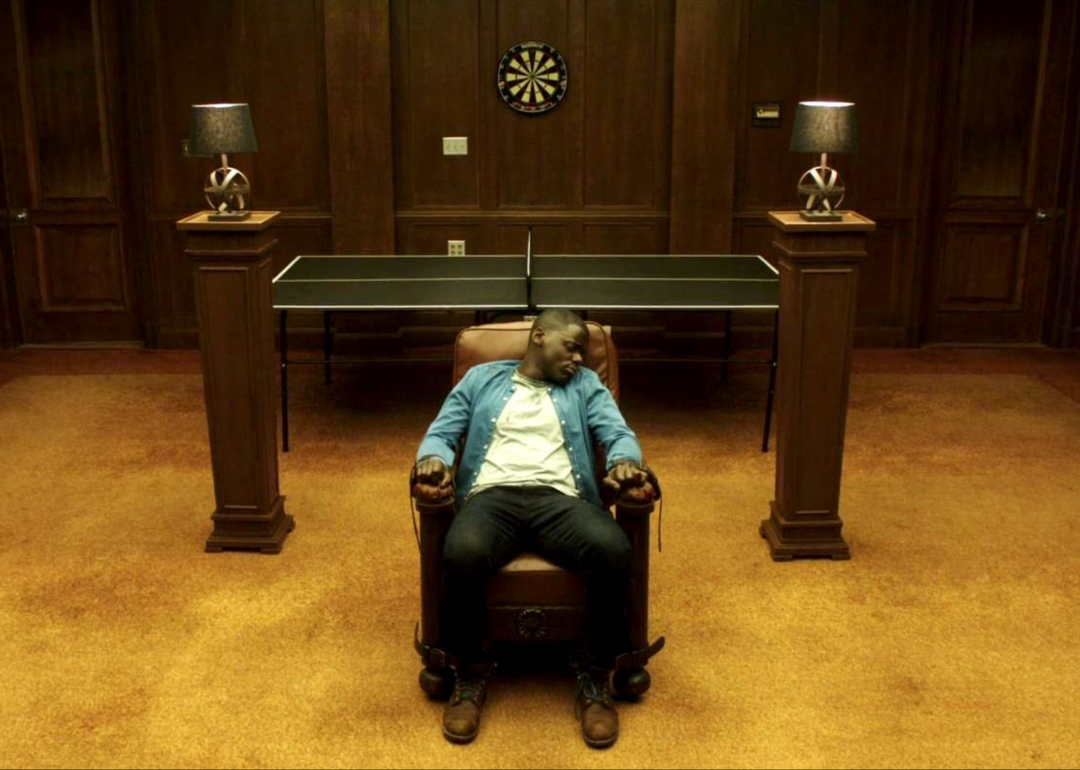
Universal Pictures
Get Out (2017)
Daniel Kaluuya in “Get Out.”
– Director: Jordan Peele
– IMDb user rating: 7.7
– Metascore: 85
– Runtime: 104 minutes
There was no hotter topic of conversation in 2017 than whether audiences successfully guessed the “Get Out” plot twist or not. Jordan Peele’s low-budget indie horror film was a breakthrough success, catapulting the beloved comedian out of his “Key and Peele” fame and into the realm of the great modern writer-directors.
In “Get Out,” Peele successfully tackles themes of racism and the white fetishization of the Black body and Black culture, as evidenced through the plot twist wherein protagonist Chris (Daniel Kaluuya), a Black male, is revealed to have been targeted by a white family to transplant the brain of a rich white person into his body. Safe to say, anyone who predicted that plot twist was either a genius or liar!
You may also like: 25 iconic closing shots from film history